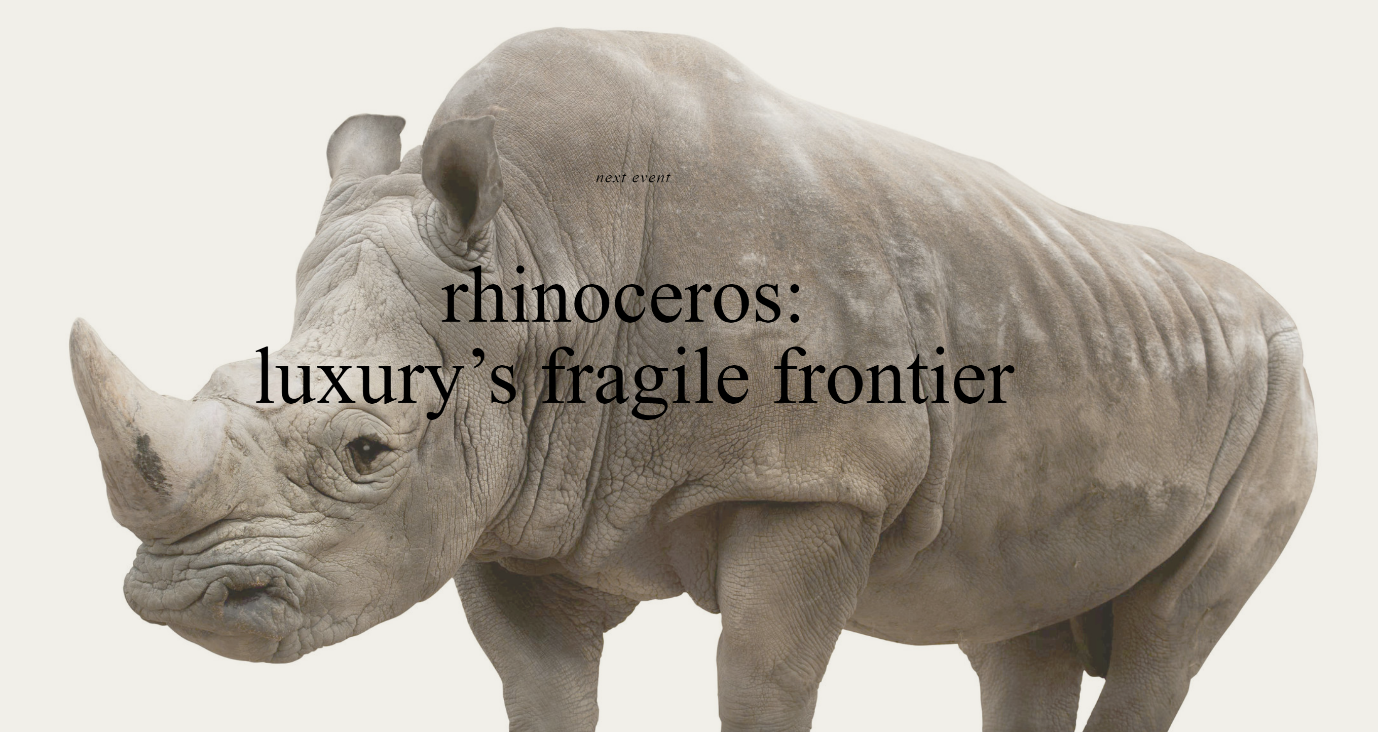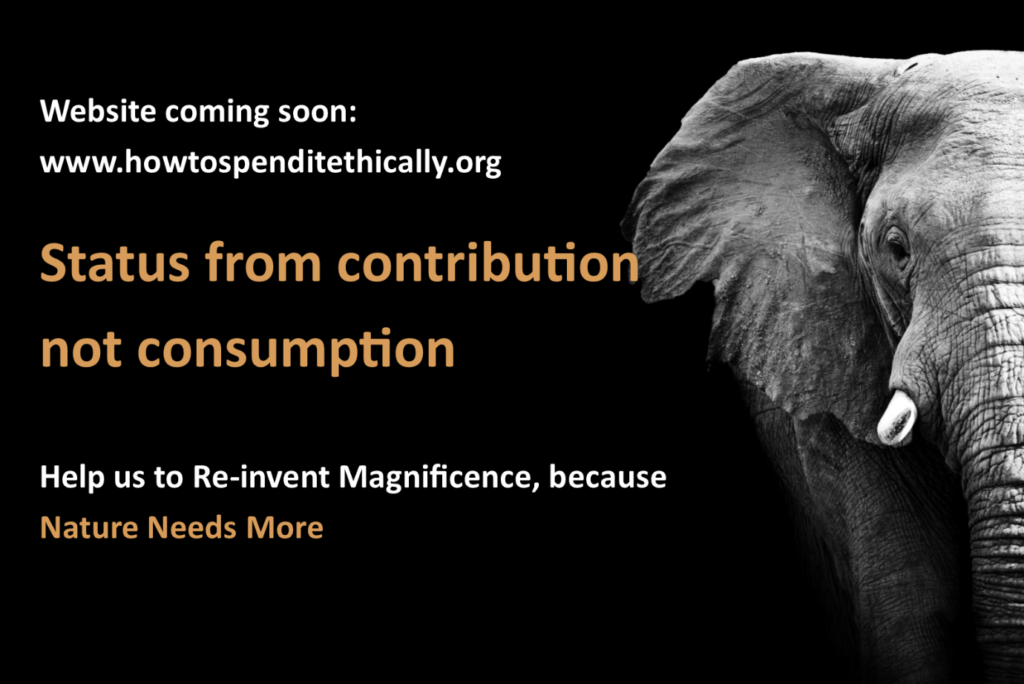In one of the last blogs I wrote under the Breaking The Brand banner, in June 2017, I covered the topic of The Power of One, highlighting the stories of two individuals, Nicholas Duncan and Donalea Patman, who have invested of themselves to make a significant difference for wildlife. Now I want to tell another story, that of Dr Catherine Kovesi, a historian at the University of Melbourne. One of Catherine’s specialist research areas is the history of luxury consumption and has recently been appointed a General Editor of the forthcoming Bloomsbury series a Cultural History of Luxury.
As many of our long-term supporters know, I have believed for some time that we need global influencers in both business and economics involved in closing down the market for perceived luxury products that come from the natural world, both flora and fauna. If wildlife and timber crime does not move beyond the concerns of conservation groups and law enforcement to also include those who understand the commercial and psychological nature of how to sell and drive desire, we will not solve this issue in time to save even some of the most iconic species from extinction in the wild. I first wrote about this in December 2014, when I highlighted the BBC documentary series, The Men Who Made Us Spend.
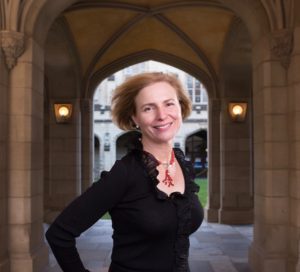 A chance meeting with Catherine has resulted in rhinos ‘crashing’ her life (for those who don’t know – the plural of rhino is a ‘crash’). In hearing about the plight of the rhino and the fact that the current poaching crisis is a result of rhino horn being considered a luxury ‘product’, Catherine has organised and curated the upcoming Symposium and Exhibition: Beauty and the Beast: Venice and the Rhino. The exhibition and symposium not only covers the critical impact for the rhino of the current, destructive pseudo-luxury market, but also the impact on Venice, as a growing consumer class desire luxury travel experiences.
A chance meeting with Catherine has resulted in rhinos ‘crashing’ her life (for those who don’t know – the plural of rhino is a ‘crash’). In hearing about the plight of the rhino and the fact that the current poaching crisis is a result of rhino horn being considered a luxury ‘product’, Catherine has organised and curated the upcoming Symposium and Exhibition: Beauty and the Beast: Venice and the Rhino. The exhibition and symposium not only covers the critical impact for the rhino of the current, destructive pseudo-luxury market, but also the impact on Venice, as a growing consumer class desire luxury travel experiences.
At this event, staged in Venice, we reveal the recent and artificial construction of rhino horn as an object of prestige. Only by understanding the true nature of the current, manufactured desire to buy rhino horn do we have a chance of collapsing the demand.
Why Venice? The rhino and Venice have a curiously entwined history and present day predicament. The rhino is represented in one of the city’s most ancient mosaics, and also an eighteenth-century touring rhino is famously depicted in the city’s art. Now the rhino and Venice are both under threat from their status as luxuries. Perhaps it takes someone who knows the historical impact of luxury consumption to highlight the urgent need to change perceptions of the destructive pseudo-luxury market, certainly there are few people who could understand this issue more. As Catherine states in the introduction to the event:
How It All Began
In 2015 I started researching the history of luxury consumption after asking myself what could be learnt from this history to tackle the current desire for wildlife ‘products’ that are perceived as status-enhancing. A series of lucky accidents firstly found me in London when the Victoria & Albert Museum was hosting an exhibition: What is Luxury?
One of the concepts the exhibition’s literature introduced was that of Magnificence, and Magnificence vs. Luxury. In its origins, luxury was not a term to describe consumption by elites, but one used to denigrate the aspirational consumer practices of the newly emerging merchant class. In contrast, magnificence is related to the positive uses of wealth, i.e. doing something valuable for the public good. I couldn’t believe my luck (and the luck of the rhino) to read that the author of this work, Dr Catherine Kovesi, was based in Melbourne. I contacted Catherine and we managed to meet in early 2016.
The Exhibition and Symposium
I have been delighted to be able to support Catherine in some small way has she has created this exhibition and symposium. The event is promoted on Catherine’s website: www.emporium.org.au
The Exhibition – Rhinoceros: Luxury’s Fragile Frontier
Catherine Kovesi
Organiser and Curator
University of Melbourne
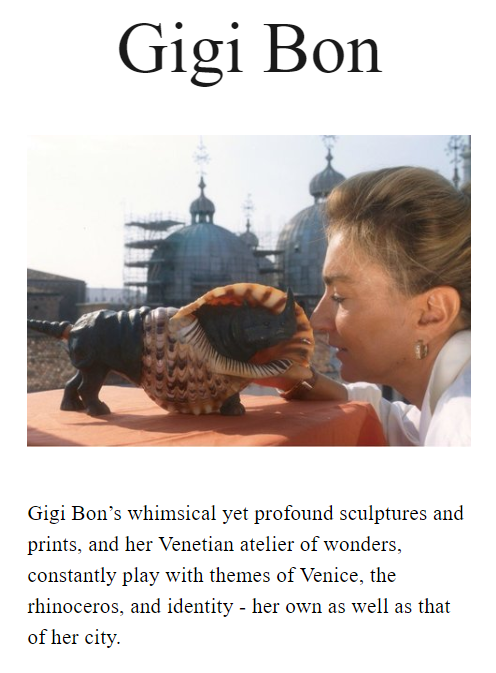 |
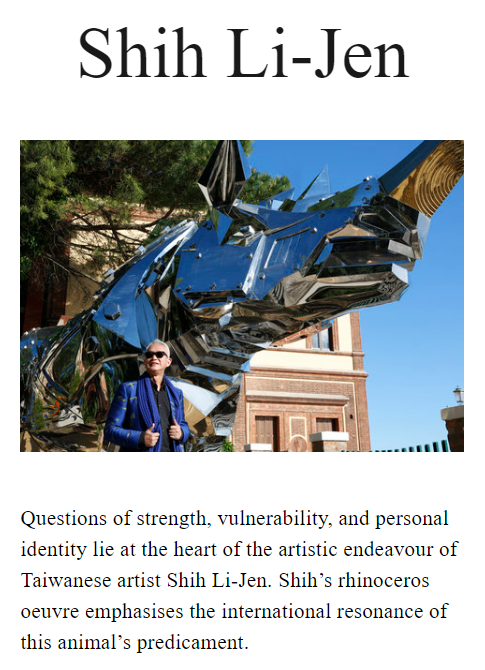 |
For Venetian artist Gigi Bon, the fate of the rhinoceros and Venice are symptomatic of our consumer world: they are both unique and vulnerable, “If we cannot save the rhino or Venice, she asks, what can we save?”
 For the exhibition, Nature Needs More has produced a short video highlighting the story of the Breaking The Brand, RhiNO horn demand reduction strategy and campaigns, titled: Extinction: The Vulgarity of Desire.
For the exhibition, Nature Needs More has produced a short video highlighting the story of the Breaking The Brand, RhiNO horn demand reduction strategy and campaigns, titled: Extinction: The Vulgarity of Desire.
The video illustrates how luxury consumption and status differentiation are the key drivers behind the illegal wildlife trade and the current demand for rhino horn from Viet Nam. In order to break the demand, we need to directly address the status anxiety driving the consumers – wealthy Vietnamese businessmen.
The video shows how Nature Needs More has developed the campaigns, since their launch in September 2014, based on these consumer insights, and highlights our future focus.
The Symposium – Beauty and the Beast: Venice and the Rhino
Organiser and Curator
University of Melbourne
To hear more about the exhibition and symposium:
For the symposium, I will speak about my research regarding the final step in the Breaking The Brand, RhiNO horn demand reduction strategy, namely redirecting desire. The title of my presentation is: Reinventing Magnificence: Status from Contribution.
As already highlighted, historically magnificence was the term used for the undertaking of great projects and actions designated to the public/greater good. It was understood as a moral framework that obliged those who were wealthy to do something that was of value to society and hence could highlight the wisdom and prestige of the person undertaking the project. The exact nature of what was valued the most at the time depended on circumstance, but it often involved public buildings (libraries, cathedrals, temples, universities and later museums or art galleries). The spirit of such magnificence was generosity, virtue, honour and a desire to leave a lasting legacy. Gionvanni Pontano, an Italian humanist and poet, called magnificence the “fruit” of wealth.
The most pressing need today is to reconnect society with nature and establish a better balance between human needs and the needs of the planetary eco-systems. We need trailblazers, people with the resources to set examples and demonstrate that we can engage with nature on a balanced footing and that we can undo some of the damage that has been done by the over-commercialisation on the natural world. For example, these trailblazers may decide to stay in their 3 bed-roomed apartment in Knightsbridge and not upgrade to the 5 bed-roomed house. With the £10Million saved by foregoing this move they could contribute to a well-designed and targeted demand reduction campaign that could break the back of the demand for rhino horn. In essence one man, woman or family could decide to save the rhino from extinction in the wild! Now that would be magnificent!
In Conclusion
What is exciting about this event is that it not only starts to address the nature of luxury consumption and how it needs to evolve to ensure it doesn’t drive the rhinoceros to extinction in the wild or destroy the ancient city of Venice, but also that everyone has supported this event pro-bono; they have given of themselves. There is a strong shared concern that we cannot continue to allow unrestrained luxury consumption of both our unique and historic places and our natural wonders. This shared concern is driving both the exhibition and symposium contributors to spread the word and to inspire more people to question our current path of unlimited exponential growth on a limited planet.
This event could not have been achieved without passion and commitment of Catherine Kovesi; Venice and the rhino have a wonderful ally and we all have another example of The Power of One. Thank you Catherine.
For Nature Needs More’s European based supporters, we hope that you may join us at the launch of this event and the symposium on the 24th November 2018 at the Palazzo Contarini Polignac. Help Nature Needs More to Re-Invent Magnificence. Please share the information about this event with friends and colleagues who may be interested in joining us.
Epilogue
To build our strategy of Re-Inventing Magnificence (Status from Contribution), in the coming weeks Nature Needs More will launch www.howtospenditethically.org
With articles, opinion pieces and ideas about how to be more conscious about consumption and purchasing choices that are impacting the natural world.
Finally, I am delighted to have the opportunity to work with Catherine further, having co-authored a paper which is currently undergoing a peer review process and that we hope will be published in 2019: Wildlife, Conservation, and Rethinking Ethical Fashion.

